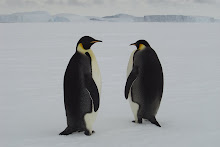Antarctica is known to be holding 75% of the total world’s fresh water in the form of 90% ice. To hold, this water in a healthy state of hygiene, it has a natural cooler, otherwise, water would have developed bacterial counts, much higher than probably, we can consume. Also, the loss of this water in the form of evaporation is compensated by the fresh snowfall, so that it maintains itself. The beauty of this fresh water is that, Antarctica is not holding this water in a deep well or pond or a pit or lake; it is on the top of gently increasing slopes of a huge dome. Probably nature has kept it in this fashion, so that man can use it, as and when required.
Antarctica is a gigantic freezer with its doors open to the southern hemisphere. Since its doors are open, it transports cold in the form of air out flowing from the interior of the continent to the periphery; water melted from polar cap ice and the shelf breaking in the form of ice bergs. The transport of cold is probably to keep the biological life in the Antarctic ocean as full of proteins , fat and fresh for consumption.
The biological reserve that has already been exploited by the man is the biological life in the ocean. Whales and seals were killed for various reasons and to such an extent that today, many nations had to declare them as "endangered species". Now, man has focused its attention on krill-the stock of food is very well known. The use of Antarctic bacteria for bio-sciences applications is another reserve.
Apart from these two apparent resources, it is the hidden resources which are now being looked at and as assessment is being made.
Antarctica is attaining great importance, as a possible source of minerals, oil, coal etc. However, at the moment, the exact resource potential and economics, may be the limiting factors, but with the technological advancements, days are not far off, when mining, off-shore oil drilling etc may be a reality in Antarctica.
Antarctica formed a part of the super Gondwana continent about 200 million years ago. Australia, India, Africa and South America were part of this Gondwana continent, which slowly drifted apart after Gondwana fragmented. Landmass of Antarctica, which covers an area of about 14.5 million sq kms, is about 3.2 to 3.6 billion years old, covered by rocks of relatively younger age of sedimentary, plutonic and of volcanic origin.
Therefore, since, India, Australia, South America and Africa have deposits of mineral wealth, it is therefore, believed that the Antarctic continent must have these deposits in large quantities, but here everything is underneath, the thick polar cap ice. In fact, it is the thick polar cap ice, which has restricted, the exact assessment and exploitation of minerals, but everyone is curious to know, what kind of deposits are there and what could be our share, if such an exploitation becomes, a reality.
Until 1970s, the expeditions were mainly for Scientific purposes, but with the ever increasing pressure of population, energy and economical needs of the countries, several nations have taken interest in Antarctica's mineral resources. Of course, the assessment of Antarctic mineral resources at the present stage is based on geological analogies and reconnaissance evidence.
The Antarctic Peninsula is easily accessible and thus has been studies, well. The modern technique of hydrocarbon resource assessment using sedimentary basin has suggested, petroleum potential of Antarctica. Oil is one of the minerals, which is going to attract many nations and the technology for off-shore oil drilling is not new to the world, and world, would see, its use even in Antarctica in the century. It has been estimated that 45,000 million barrels of oil and 115 trillion cubic feet of gas may lie, off shore the Antarctic coast.
Of course, while making any off-shore drilling, the natural gate keepers of Antarctica, technology will have to be developed to tame the natural gate keepers of Antarctica-the Ice-bergs.
Coal seems to be available in varying quantities and coal belts have been postulated under most of the east Antarctica's central ice sheet. It is believed that coal deposits many be around 11% of the total coal deposits of the whole world.
Among the other minerals, mica, quartz crystals, iron and many other ores are also available.
The exploitation of any particular mineral deposit in Antarctica will depend on its type, size and location, as well as, the environmental factors. At the moment, minerals of high value like gold, platinum, nickel, uranium will get the priority.
Although, mining at the moment is banned, United States environmental groups were the first to oppose the potential opening of mining and oil drilling in Antarctica, it has now been signed by all the member nations of the Antarctic treaty.
It is in fact the Antarctic treaty which has kept the continent free of conflicts, but the human pressure is increasing due to the scientific and tourist activities. The treaty bans mining in Antarctica for a minimum of 50 years and designates the whole continent and its dependent marine eco-system as a natural reserve devoted to peace and science.
QUOTE OF THE DAY!
"Before: Man search for food! Now: Food search for man!!"
"Life without energy is like a candle without fire."
Adsense
Friday, July 25, 2008
Subscribe to:
Comments (Atom)
Mole Holes!

Weathering of rocks in Antarctica
Rock Weathering

Larsemann Hills Rock Weathering
Hanging Rock

Hanging Rock Larsemann Hills and my friend behind it
Chooper

Chopper on duty
Algae

Antarctic Algal Mat
Pancake Ice

Antarctic Pancake Ice








